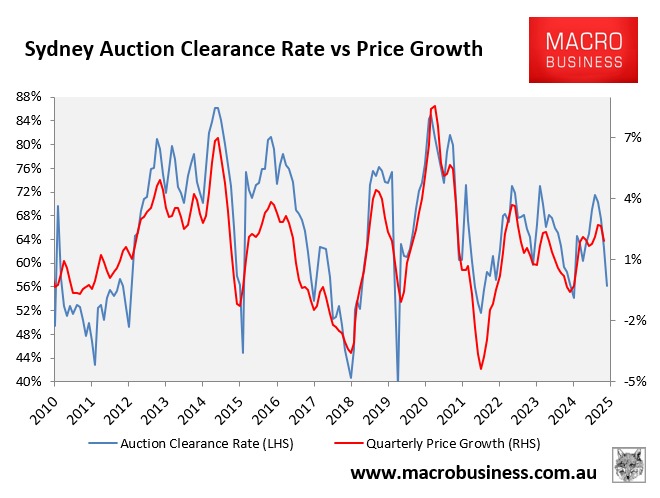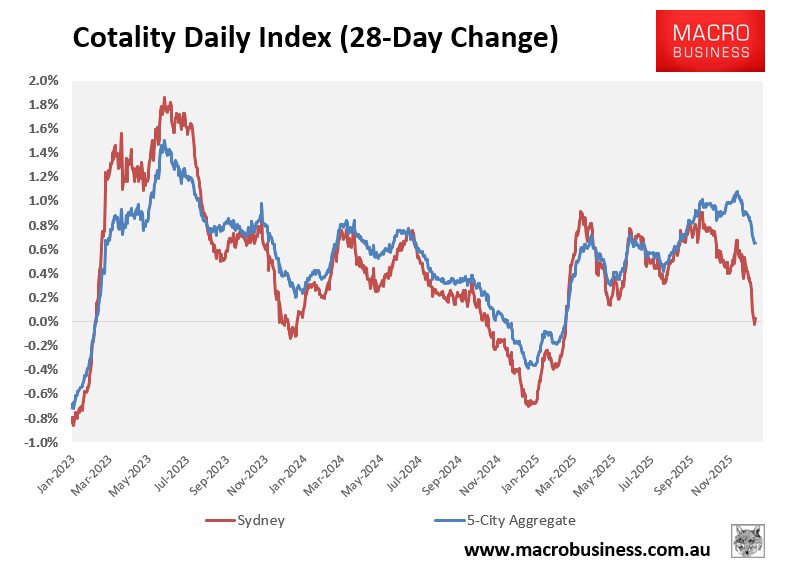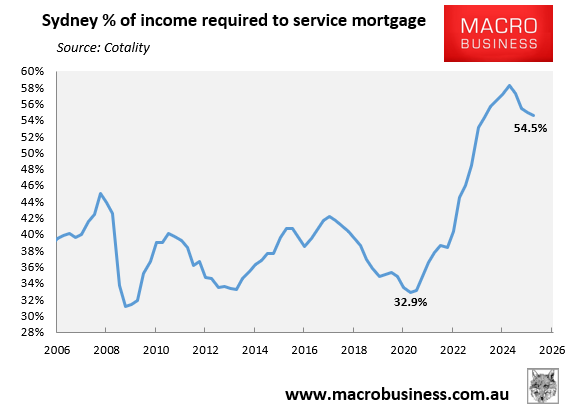Cotality’s preliminary auction results show that buyer demand continues to wilt in Sydney, where the preliminary clearance rate has fallen to a 12-month low of just 58.1%.

Source: Cotality
“While the reduction in volume is following the typical seasonal pattern, the gradual easing in auction clearance rates, which has been evident since mid-September, has more to do with market conditions”, noted Cotality in its Sunday media release.
“Cotality’s high-frequency daily Home Value Index (HVI) is showing a clear slowdown in the pace of growth through December, especially in the major auction markets of Sydney and Melbourne”.
“Over the past four weeks, Cotality’s daily HVI for Sydney has levelled out with a 0.0% change, while the four-week rate of growth in Melbourne values has eased back to 0.1%”.
“The preliminary clearance rate [in Sydney] fell to 58.1%, 3.4 percentage points lower than a week ago and the lowest preliminary clearance rate since the week ending December 8th last year”, Cotality noted.
This week’s further decline in Sydney’s preliminary clearance rate follows the prior week recording the lowest final clearance rate this year:

As a result, Cotality’s daily dwelling values index for Sydney has recorded zero growth over the past 28 days, down from a recent peak of 0.9% in September:

Leading Sydney auctioneer Tom Panos summarised the changing buyer sentiment in his weekend market wrap on YouTube:
“It’s quite incredible how life has changed in a matter of basically six weeks. So six weeks ago, we were sitting here and we were talking about a rate cut on Melbourne Cup Day, a rate cut in February, or a rate cut in the middle of the year”.
“And now if you actually ask all the people that have a view that matters more than the public, people that work in the financial services as very senior executives, they’ve essentially turned around and said there’s a 40 to 50% chance that there’s going to be a rate rise in February and there is like a 100% chance there’s going to be a rate rise by the middle of the year”.
Indeed, the prospect of no more rate cuts and possibly rate rises has stifled buyer sentiment, especially in Sydney, where affordability is most stretched.


